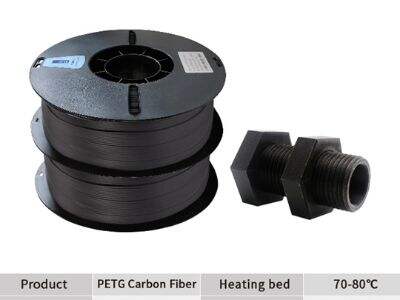Aerospace engineering has to do with the design, construction, and science behind machines that fly, such as airplanes and rockets. This work requires precision, accuracy, and new ideas to build safe, efficient flying machines. One such technology called FGF 3D printing has been revolutionizing the aerospace industry in incredible ways recently.
FGF, or fused granular fabrication, is a recent type of additive manufacturing. It employs a computer-controlled nozzle to create three-dimensional objects by layering material. This tech assists engineers and designers in creating complex, highly detailed parts. FGF 3D printers are revolutionizing the manufacture of aircraft by improving speed, simplicity, and cost.
Improving Efficiency and Precision in Aerospace Engineering
Ten or twenty years ago, building airplanes was a factory process in which employees hand-cut, -shaped, -drilled, and -fastened individual components. This was an arduous process, leading to errors at times. Now, aerospace engineers can do just that with FGF 3D printing, allowing them to design and manufacture parts with incredible precision and speed.
FGF 3D printers, for instance, rely on specialized software to generate digital models of airplane components. Such models can consequently be translated to real objects through the print process. This technology enables engineers to validate and optimize their designs in record time. FGF 3D printers are revolutionizing the way airplanes are built by speeding up and improving the quality of the process.
Pushing the Frontiers of Aerospace Technology
But the aerospace industry is constantly evolving with new technologies and materials dictating how we travel through the air. FGF 3D printing is making this shift possible, opening up new concepts in airplane design. FGF 3D printers allow designers to print lightweight structural parts, and that helps save fuel and boost performance.
FGF 3D printing allows aerospace engineers to try out new design concepts, producing airplanes that fly more efficiently and consume less power. This technology is paving the way for the next generation of airliners, from innovations that once seemed farfetched. 3D printers are moving the aerospace industry forward and building the future of flight.
Tools for 3D Printing of FGF to Redefine Design and Production of Airplanes
The way things are made and the materials involved have often restricted airplane design. This is where FGF 3D printing comes in, enabling engineers to create complex and unique geometries that were not possible to achieve before. FGF 3d printer and filament is reshaping how airplanes are designed and made, contributing to the development of more efficient, environmentally friendly aircraft.
Parts can be made with unique shapes and structures that optimize performance and minimize mass on FGF house 3d printer. This degree of design freedom could transform airplane construction and make aircraft better, safer and more environmentally friendly. Thus, FGF 3D printing simplifies the design of airplane process, ushering in a new age in the field of aeronautics.
FGF 3D Printers Leading the Charge
The aerospace industry is constantly evolving and FGF 3D PRINTER technology will play a critical role in the creation and manufacturing of aircraft. Dowell 3D is at the forefront of this shift, offering innovative FGF 3D printers that are revolutionizing airplane manufacturing. This is the latest in manufacturing technology that we hope aerospace engineers and designers will be able to utilize to create new concepts in the aerospace industry through partnership with Dowell 3D.
Dowell 3D’s FGF printers contain the newest features to assist accurately and efficiently producing airplane components. These printers can reduce production time, lower costs, and ensure quality and performance, among other benefits, for aerospace companies. Dowell 3D is also committed to providing supportive solutions to improve aircraft manufacturing by applying the growing trend of FGF 3D printing technology.

 EN
EN
 AR
AR
 BG
BG
 HR
HR
 DA
DA
 NL
NL
 FR
FR
 DE
DE
 EL
EL
 HI
HI
 IT
IT
 JA
JA
 KO
KO
 PT
PT
 RU
RU
 ES
ES
 SV
SV
 TL
TL
 ID
ID
 SR
SR
 SK
SK
 UK
UK
 VI
VI
 ET
ET
 HU
HU
 TH
TH
 TR
TR
 MS
MS
 GA
GA
 BE
BE
 HY
HY
 KA
KA
 LO
LO
 LA
LA
 MN
MN
 NE
NE
 SO
SO
 MY
MY
 KK
KK
 UZ
UZ
